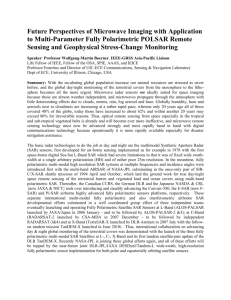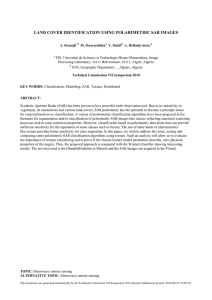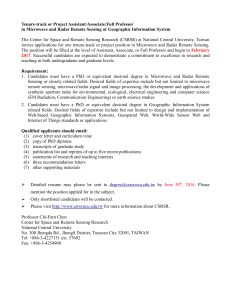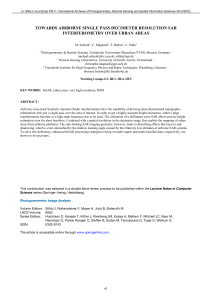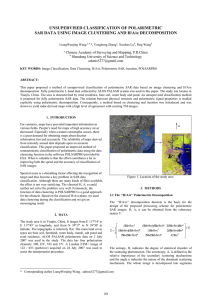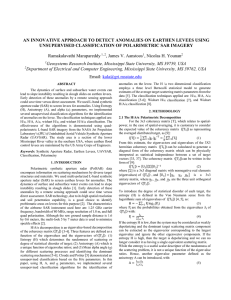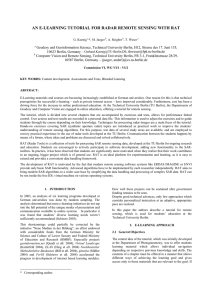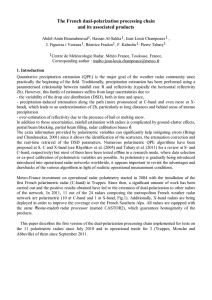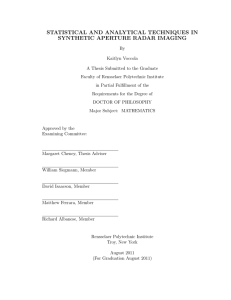TIDAL WETLAND MONITIORING USING POLARIMETRIC SYNTHETIC APERTURE RADAR
advertisement
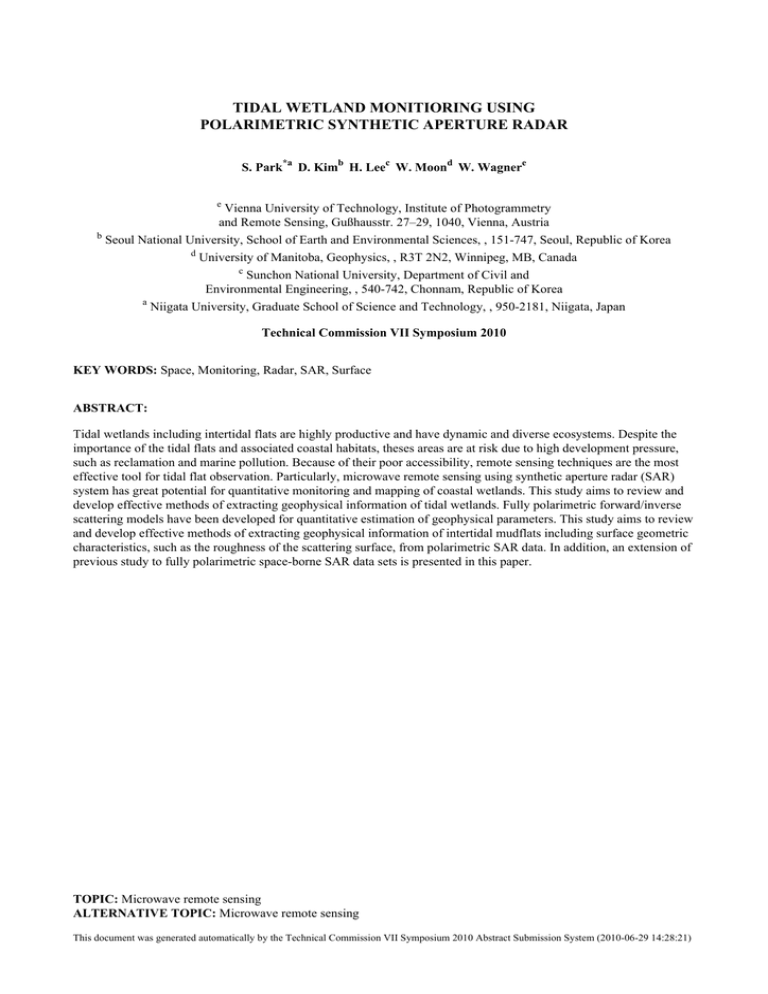
TIDAL WETLAND MONITIORING USING POLARIMETRIC SYNTHETIC APERTURE RADAR S. Park*a D. Kimb H. Leec W. Moond W. Wagnere e Vienna University of Technology, Institute of Photogrammetry and Remote Sensing, Gußhausstr. 27–29, 1040, Vienna, Austria b Seoul National University, School of Earth and Environmental Sciences, , 151-747, Seoul, Republic of Korea d University of Manitoba, Geophysics, , R3T 2N2, Winnipeg, MB, Canada c Sunchon National University, Department of Civil and Environmental Engineering, , 540-742, Chonnam, Republic of Korea a Niigata University, Graduate School of Science and Technology, , 950-2181, Niigata, Japan Technical Commission VII Symposium 2010 KEY WORDS: Space, Monitoring, Radar, SAR, Surface ABSTRACT: Tidal wetlands including intertidal flats are highly productive and have dynamic and diverse ecosystems. Despite the importance of the tidal flats and associated coastal habitats, theses areas are at risk due to high development pressure, such as reclamation and marine pollution. Because of their poor accessibility, remote sensing techniques are the most effective tool for tidal flat observation. Particularly, microwave remote sensing using synthetic aperture radar (SAR) system has great potential for quantitative monitoring and mapping of coastal wetlands. This study aims to review and develop effective methods of extracting geophysical information of tidal wetlands. Fully polarimetric forward/inverse scattering models have been developed for quantitative estimation of geophysical parameters. This study aims to review and develop effective methods of extracting geophysical information of intertidal mudflats including surface geometric characteristics, such as the roughness of the scattering surface, from polarimetric SAR data. In addition, an extension of previous study to fully polarimetric space-borne SAR data sets is presented in this paper. TOPIC: Microwave remote sensing ALTERNATIVE TOPIC: Microwave remote sensing This document was generated automatically by the Technical Commission VII Symposium 2010 Abstract Submission System (2010-06-29 14:28:21)
